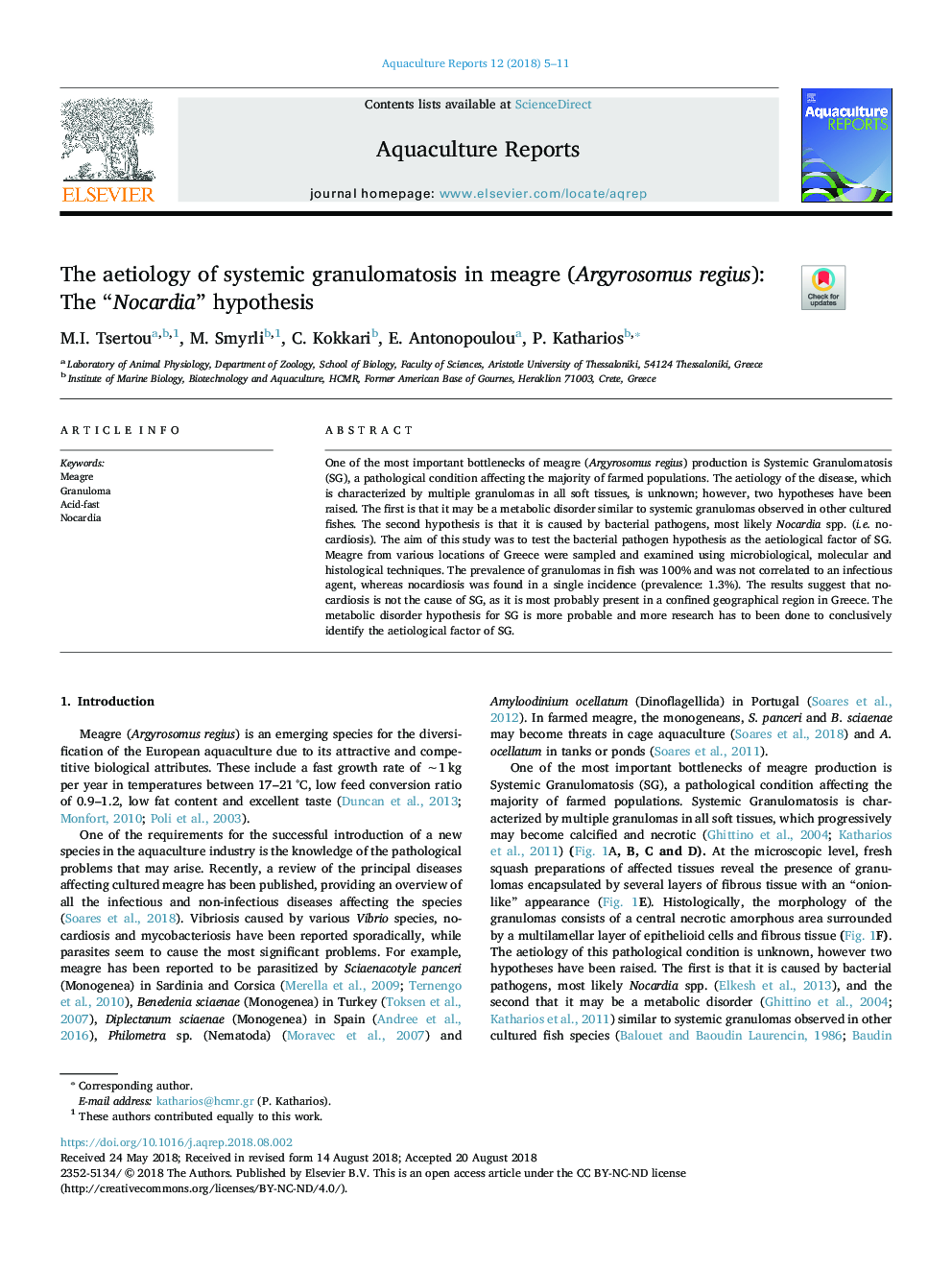| Article ID | Journal | Published Year | Pages | File Type |
|---|---|---|---|---|
| 8959338 | Aquaculture Reports | 2018 | 7 Pages |
Abstract
One of the most important bottlenecks of meagre (Argyrosomus regius) production is Systemic Granulomatosis (SG), a pathological condition affecting the majority of farmed populations. The aetiology of the disease, which is characterized by multiple granulomas in all soft tissues, is unknown; however, two hypotheses have been raised. The first is that it may be a metabolic disorder similar to systemic granulomas observed in other cultured fishes. The second hypothesis is that it is caused by bacterial pathogens, most likely Nocardia spp. (i.e. nocardiosis). The aim of this study was to test the bacterial pathogen hypothesis as the aetiological factor of SG. Meagre from various locations of Greece were sampled and examined using microbiological, molecular and histological techniques. The prevalence of granulomas in fish was 100% and was not correlated to an infectious agent, whereas nocardiosis was found in a single incidence (prevalence: 1.3%). The results suggest that nocardiosis is not the cause of SG, as it is most probably present in a confined geographical region in Greece. The metabolic disorder hypothesis for SG is more probable and more research has to been done to conclusively identify the aetiological factor of SG.
Related Topics
Life Sciences
Agricultural and Biological Sciences
Animal Science and Zoology
Authors
M.I. Tsertou, M. Smyrli, C. Kokkari, E. Antonopoulou, P. Katharios,
